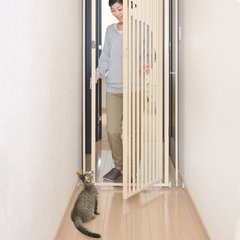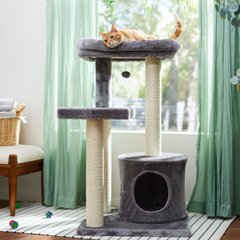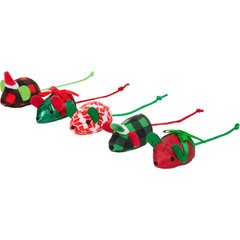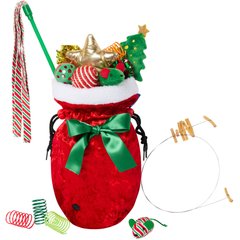11 Ways To Cat-Proof Your Christmas Tree
Sitting under the glow of your Christmas tree, it really does feel like all is merry and bright—until you hear the awful sound of your fragile ornaments clanking to the ground and spot your mischievous (but lovable) kitty making themselves right at home in the fragrant pine needles of your decorated tree.
This is an all-too-familiar scene for cat parents, whose tree decorations and pretty holiday baubles can be mistaken as toys by their feline. Even more concerning, both real and artificial Christmas trees can pose a danger to our furry friends.
Fortunately, cat-proofing your Christmas tree can help curb some of this naughty cat behavior. Keep reading to learn how to cat-proof Christmas trees so you can enjoy a month of serene and silent nights.
Key Takeaways
- Both real and artificial Christmas trees can pose dangers to cats.
- Use anchoring, cat-safe ornaments, and barriers to prevent tree-related injuries.
- Avoid tinsel, fake snow, and exposed tree water to reduce ingestion hazards.
- Providing alternative enrichment like cat trees can redirect your cat’s attention.
How To Cat-Proof Your Christmas Tree
Christmas trees attract cats because of their twinkling lights, shiny baubles, outdoor fragrance, and thick pine branches that make a great hiding spot. While you can’t change your cat’s instincts, you can make the tree less appealing and put safety measures in place to keep them out of harm’s way.
Follow these expert tips for a more cat-friendly Christmas tree this holiday season.
1. Opt for a Small Artificial Tree
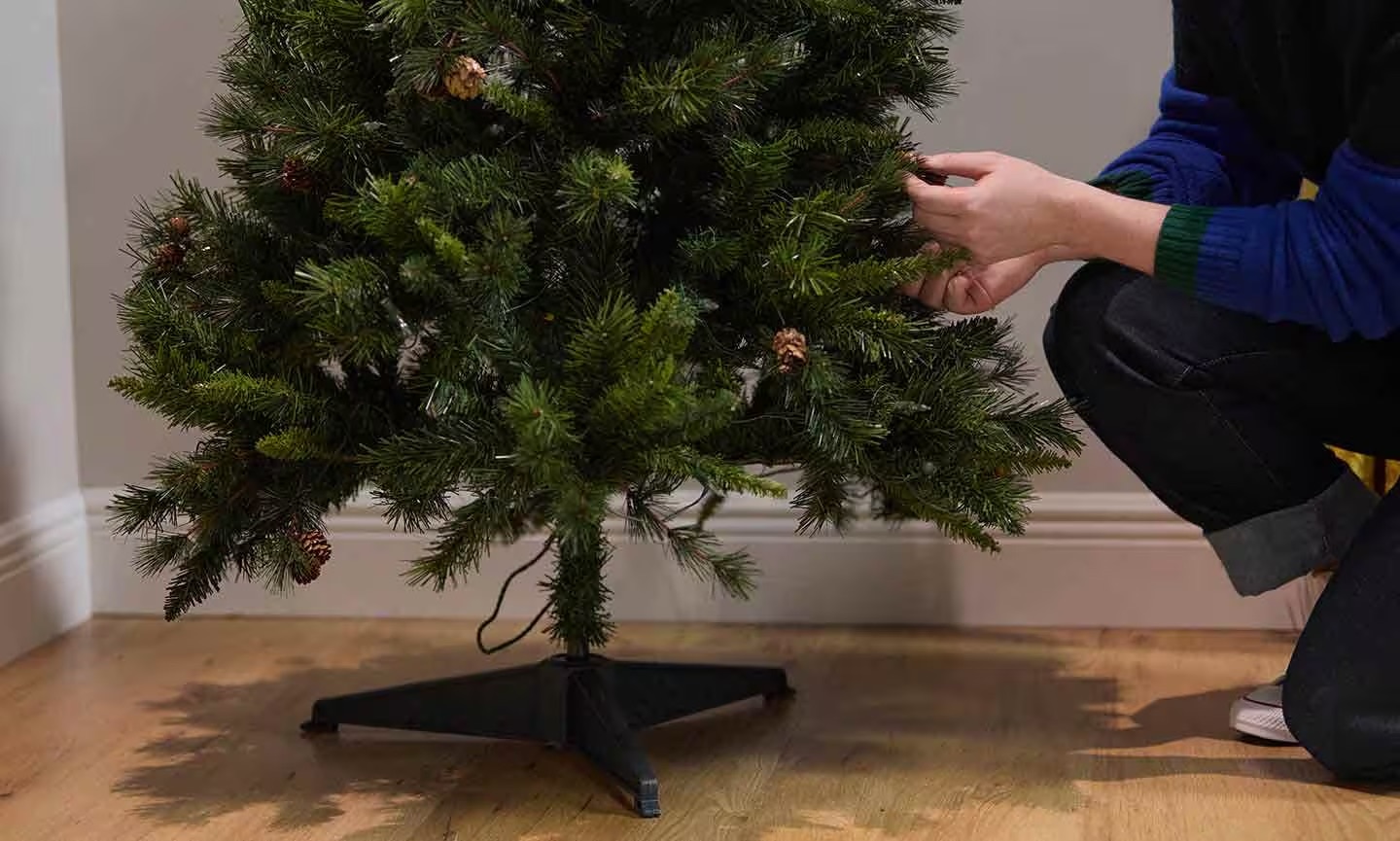
Photo by Chewy
Here’s the bad news: There’s no such thing as a truly cat-safe Christmas tree. Both artificial trees and real trees are a potential hazard to your curious cat—but some trees are considered safer than others.
Real Christmas trees—including popular firs and pines—are considered mildly toxic to cats when chewed or ingested. Further, tree farms sometimes use pesticides that are toxic to cats.
Fake trees are not as dangerous in this way, but be aware that pieces can still break off and create a digestive blockage or choking hazard.
Smaller Christmas trees are also considered less dangerous since they’re not as heavy if they topple over.
No matter what type of tree you choose, be sure to set it up with a solid base that’s difficult to tip over. That way, if your cat does pounce on your ornaments, your tree is more likely to remain upright.
2. Anchor Your Tree
Cats’ climbing instinct works well for them in the wild, where trees are firmly planted in the ground. The tree in your living room, on the other hand, can crash down much more easily.
“If you have a tree-climbing feline, your Christmas tree may topple, so make sure your tree is well-secured to the ceiling or a wall,” says David Dilmore, DVM, a veterinarian at Banfield Pet Hospital in Denver.
Cristin Coll, a certified feline training and behavior specialist in Santa Monica, California, agrees. Along with anchoring the tree to the walls and ceiling with eye hooks and twine, she recommends a heavy and sturdy tree base.
By increasing the weight of the base of the tree, you’ll make the tree harder for your cat to knock over, which can prevent injury to your cat as well as damage to your ornaments and home.
3. Place the Tree in an Area Your Cat Avoids
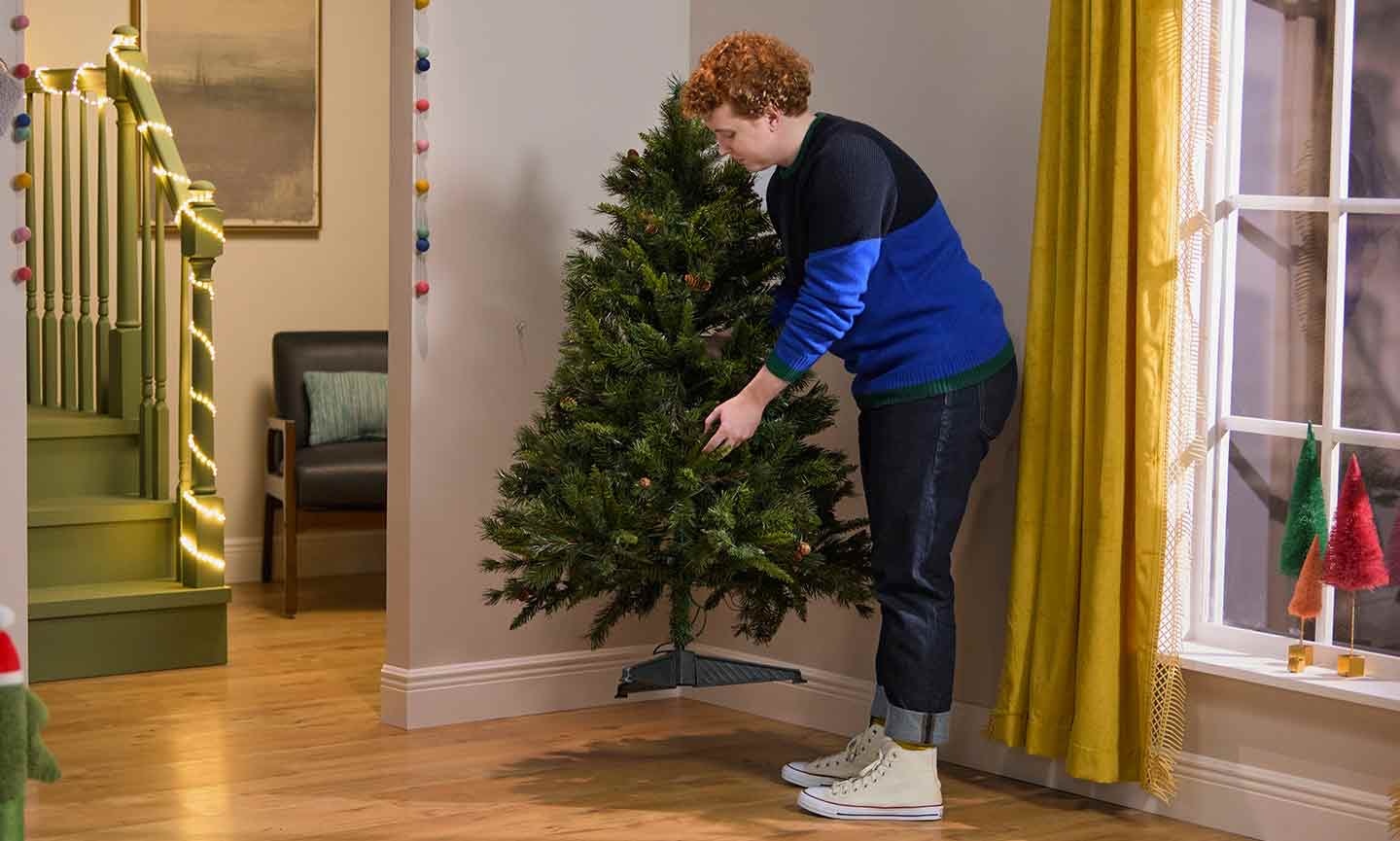
Photo by Chewy
Place your Christmas tree away from anything your cat already likes to climb or perch on. These can become launching zones that allow your cat to easily jump onto your tree.
Common launching zones include:
- Cat trees
- Tall scratching posts
- Counters
- Furniture
- Bookshelves
Stephen Quandt, certified feline training and behavior specialist in New York City, adds that many cats access the tree by going underneath it and climbing up.
“Protecting or deterring your cat from approaching the base of the tree may be the best thing you can do to prevent climbing,” he says.
4. Use a Pet Gate to Block Access
You may be able to keep your cat out of your tree by keeping your cat out of the room entirely. Close the door or use a pet gate to keep your feline friend away from the tree.
Recommended Products
5. Wait a Few Days Before Decorating the Tree
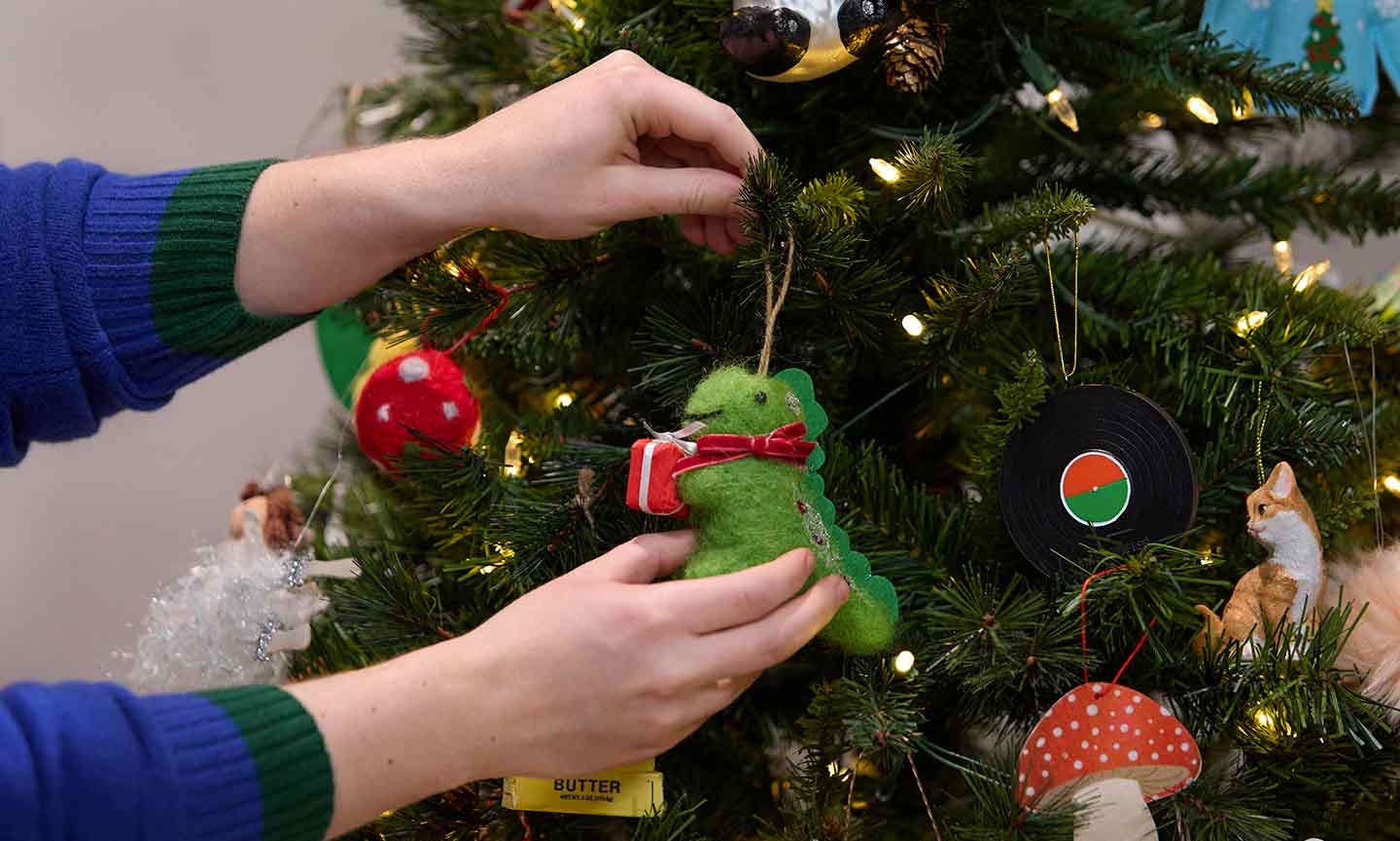
Photo by Chewy
Anything new and shiny in your home is likely to attract your cat’s eye. But if you wait a few days before adding decorations to your tree, you give your cat time to get used to it—which may make them less likely to try to investigate it when it’s all done up and sparkly.
“A Christmas tree’s greatest appeal,” Quandt says, “is often when it first arrives in the home, smells nice, and has cool air sinking out of it, assuming you bought it in a cold-weather environment.”
Give your furry friend time to acclimate to its presence before adding ornaments, lights, or other shiny baubles.
6. Use Shatterproof Ornaments
Climbing isn’t the only Christmas-tree hazard tempting curious kitties. Dangling, breakable ornaments can also become potential playthings in the eyes of cats.
“Holiday decorations are prime candidates for swatting, chewing, and general mishaps,” Dilmore says—especially when it comes to kittens and Christmas trees.
No matter your cat’s age, “Keep an eye out for glass ornaments and ornament hooks, both of which can cause puncture wounds and serious injury to probing pets.”
7. Avoid Tinsel and Long Ribbons
Other items to keep out of reach include long ribbons on Christmas presents and tinsel.
Coll says that, if swallowed, ribbons, tinsel, and other string-like materials can cause serious issues, including intestinal blockage and perforation of the intestinal tract.
8. Don’t Use Fake Snow
Flocking (aka that fluffy fake snow sprayed on Christmas trees) may look magical, but for curious cats, it’s downright dangerous.
Fake snow often contains chemicals that can be toxic if licked or chewed. Even small amounts can lead to stomach upset, and larger doses might cause more serious issues.
9. Give Your Cat a Cat Tree To Climb
The holidays are a great time to introduce a new cat tree to your home to detract attention from your Christmas tree.
“The only solution I have found is to give cats their own tree and reward them for playing on it,” says Samantha Bell, a cat training expert for Best Friends Animal Society.
She suggests buying cats their own cat tree, or using their old one and decorating it with cat toys and cat treats. Then, reward your cat whenever they interact with it, while ignoring all attempts to interact with your tree.
Recommended Products
She says cats will realize that “their tree” is for climbing and playing, and they will soon leave your tree alone. It may sound silly, but Bell swears it works—and also provides new and exciting enrichment for your cat. Think of it as a holiday cat gift just for them!
Don’t have room for a cat tree? Providing new cat toys can work, too—anything to distract your cutie from that tree.
Recommended Products
10. Cover or Hide Electrical Cords
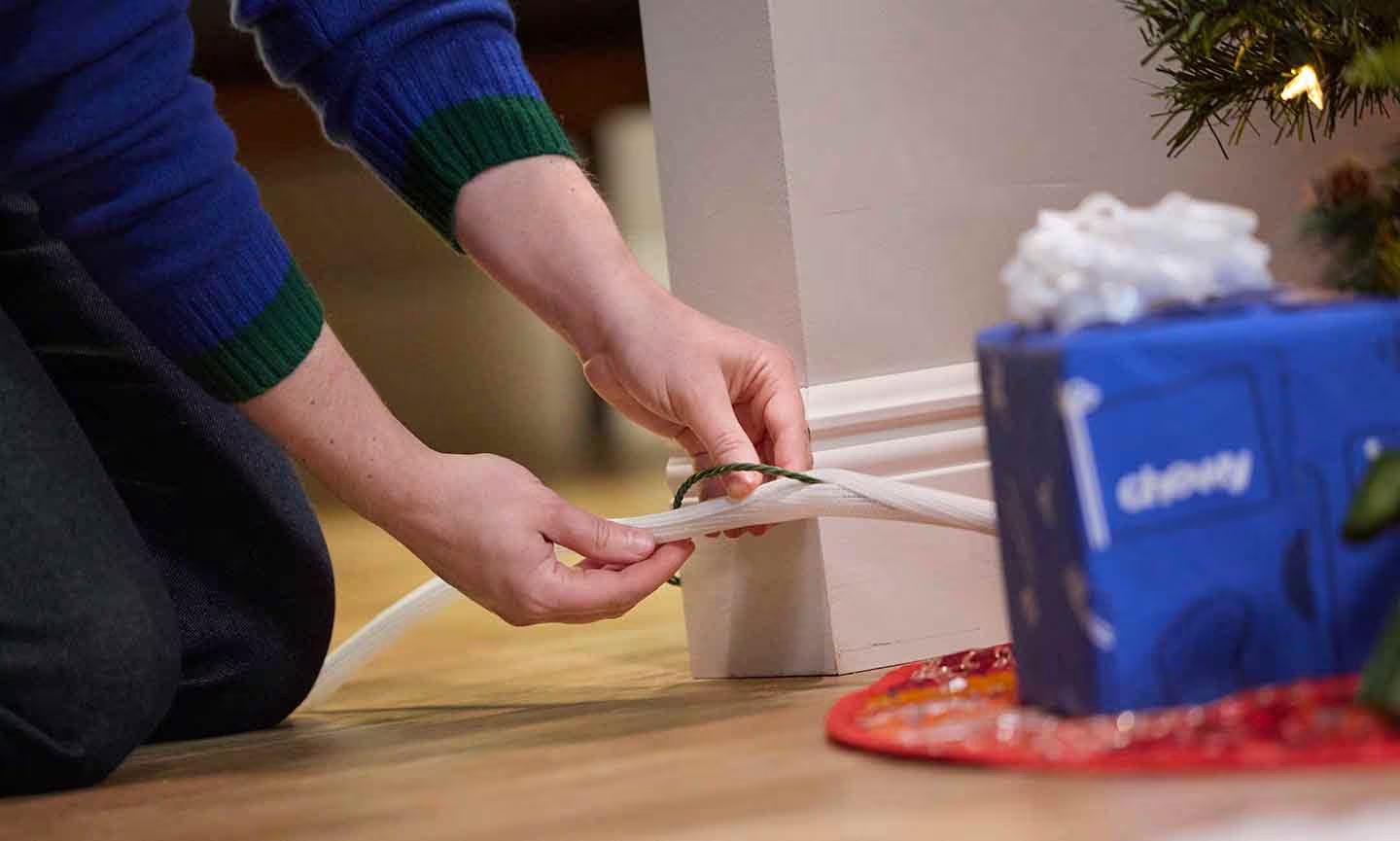
Photo by Chewy
Keep electrical cords out of reach. “Electric cords connected to holiday lights are a tempting chew toy for any kitten,” Dilmore says.
Obviously, chewing a live wire can be dangerous for your favorite feline. Cover cords with a tree skirt or cord protector like MyPet Safety Paws Cord Protector.
Recommended Product
11. Block Off Access to Tree Water
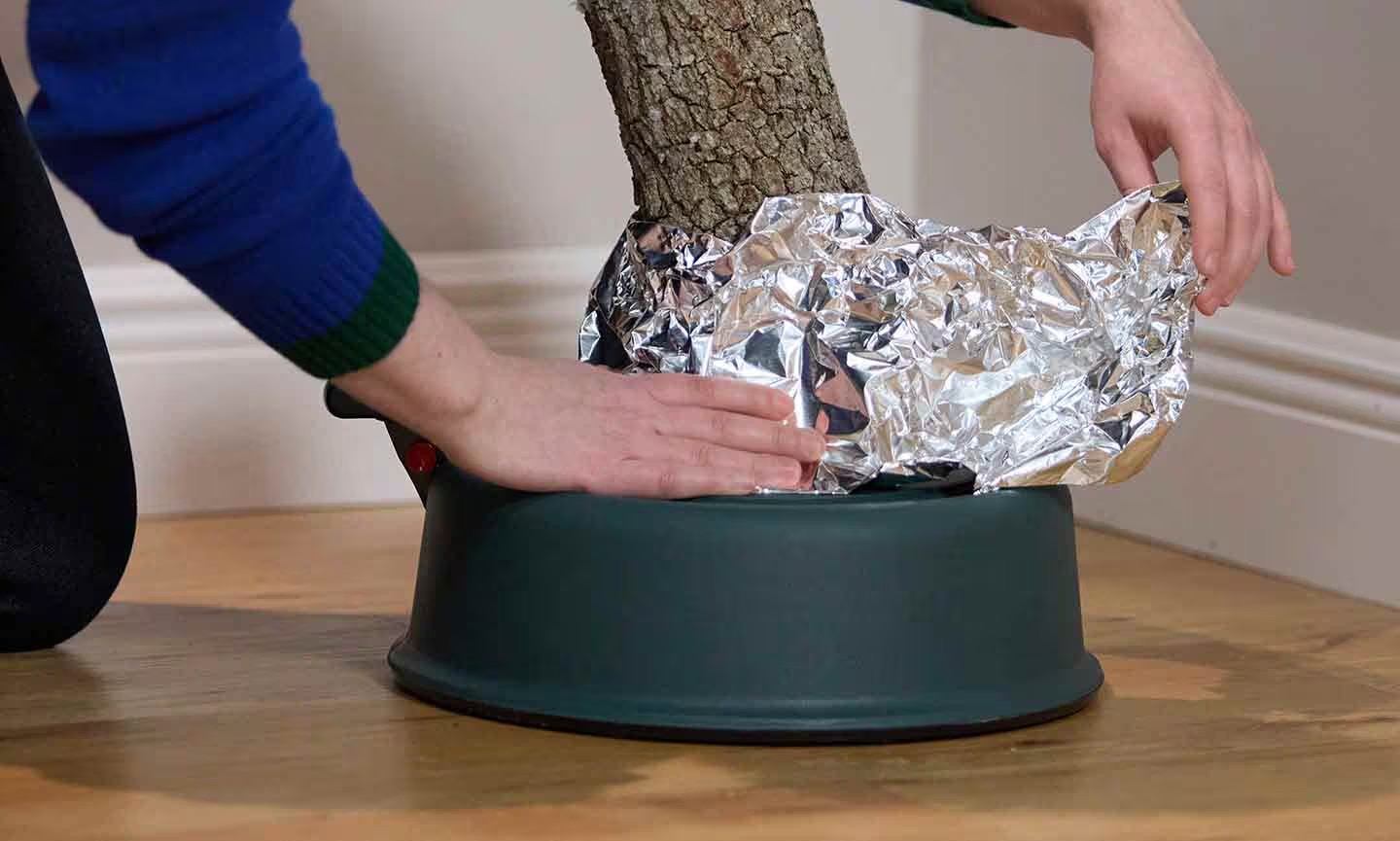
Photo by Chewy Studios
Yes, it’s important that your cat stays hydrated—but that’s a problem if the water’s coming from the basin beneath your Christmas tree, Dilmore says.
“If you have a live Christmas tree, make sure your cat can’t get to the water bowl underneath,” he says. “Some of the chemicals [and fertilizers] added to it to help the tree stay green can actually be toxic to pets and make them sick.”
Luckily, there are several ways to prevent your cat from drinking the tree water. Coll recommends placing a cover over the base, or using tin foil or a tree skirt to prevent a cat from getting into the water.
If blocking your cat’s access to the Christmas tree water is impossible, Dilmore recommends using fresh, clean water with no preservatives or chemical additives, and changing it daily.
You can also offer your cat a cat water fountain to drink from, which may be more enticing than drinking from the Christmas tree.
Recommended Product
12. Remove Tempting Presents
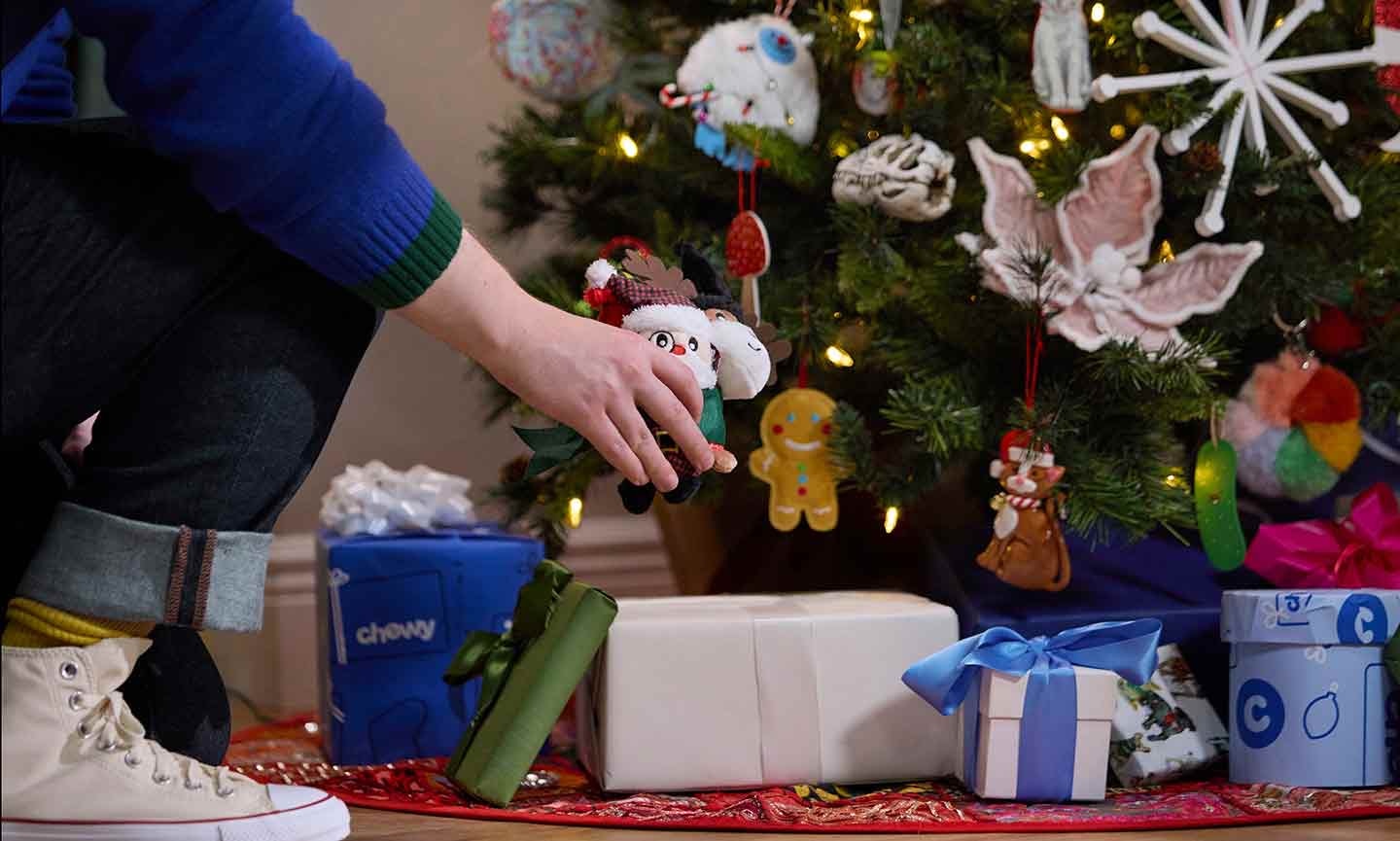
Photo by Chewy
Your cat’s got a mighty fine sense of smell, so any Christmas present filled with food, treats, or catnip can become a fun puzzle for your feline.
Keep these items out of reach until Christmas morning, then put them under the tree just in time for your family to open.
Why Cats Love Christmas Trees
So why do cats love Christmas trees in the first place? Coll says that anything new—such as a Christmas tree—instantly becomes an object of curiosity.
“Most cats are very curious about Christmas trees and see them as an exciting new opportunity,” Coll says. “Christmas trees are tall; present lots of climbing, hiding, and scratching spaces; and are incredibly enticing to our feline friends.”
They also appeal to cats’ innate instincts that date back before they were domesticated.
“Before cats began cohabiting with humans, trees provided a place for them to seek out their next meal and to watch over their territory,” Coll says. “As animals that are both predator and prey, being in high places like trees also provides them with a sense of safety, security, and control. Cats love to feel like they are in control.”
In addition to cat Christmas-tree safety concerns, there’s another instinct-driven reason to use caution. One of the more unpleasant—and not at all funny—risks of bringing a Christmas tree into the home is the potential of marking.
“Marking is a means of feline communication and takes on a few different forms: scratching, rubbing, urine spraying, and even depositing feces,” Coll says. “While marking is generally considered to be an undesired behavior to cat parents, it is a completely normal cat behavior.”
In the wild, marking objects (like a tree), helps establish territories and puts out a call for potential mates.
“The most common reasons that neutered and spayed housecats mark include territorial insecurity, other animals, stress, anxiety, and new objects with unfamiliar scents,” Coll says. “A Christmas tree would most likely fall into the category of being targeted due to unfamiliar smells.”
Understanding your own feline’s instincts and proclivities can go a long way in preventing a frustrating or potentially dangerous cat-versus-Christmas tree mishap. When you celebrate the holidays with cat Christmas-tree safety in mind, every member of the family can enjoy the festive fun of the season.

